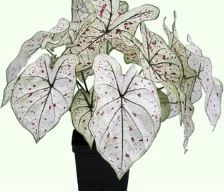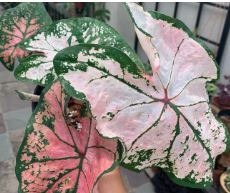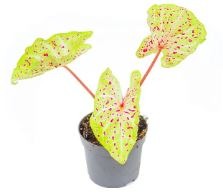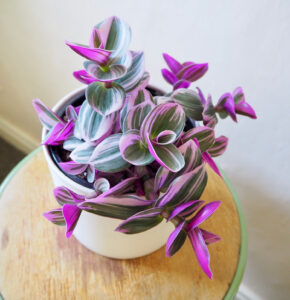What are Caladium Bulbs?
Caladium bulbs are the underground storage organs of Caladium plants. Caladiums are a group of tropical plants grown for their attractive foliage, which comes in a range of colors and patterns. The bulbs are similar to other types of bulbs, such as tulips or daffodil bulbs, in that they store nutrients and energy for the plant to use during the growing season. Caladium bulbs are typically planted in the spring and grow throughout the summer months. At the end of the growing season, the plant dies back and the bulbs go dormant until the following spring. Caladium bulbs are popular among gardeners and are used to add color and interest to landscapes, gardens, and indoor spaces.
Caladium Facts
Here are some facts about Caladium bulbs:
- Caladium bulbs are native to South America, particularly the Amazon Basin region.
- Caladium bulbs are commonly referred to as “elephant ear bulbs” because of the large, heart-shaped leaves they produce.
- Caladium bulbs come in a range of colors and patterns, including pink, red, green, white, and combinations of these colors.
- Caladium bulbs are often grown as ornamental plants and are used in landscaping, gardens, and as houseplants.
- Caladium bulbs are tropical plants and require warm temperatures and high humidity to grow and thrive.
- Caladium bulbs can be grown in containers or planted directly in the ground.
- Caladium bulbs require well-draining soil and regular watering to prevent the bulbs from rotting.
- Caladium bulbs can be propagated by dividing the bulbs in the spring before planting.
- Caladium bulbs are toxic if ingested and should be kept away from children and pets.
- Caladium bulbs go dormant in the fall and should be dug up and stored in a cool, dry place until the following spring.
When to Plant
The best time to plant Caladium bulbs depends on the climate and the growing zone where you live. In general, Caladium bulbs are planted in the spring after the last frost date, when the soil has warmed up and the temperatures are consistently above 60°F (15°C). In warmer regions, such as USDA Hardiness Zones 9-11, Caladium bulbs can be planted as early as February or March. In cooler regions, such as Zones 3-6, it’s best to wait until May or early June when the soil has warmed up enough for the bulbs to sprout. Planting too early in colder climates can cause the bulbs to rot or fail to sprout. Caladium bulbs need warm soil and air temperatures to grow and thrive, so it’s important to wait until the weather is consistently warm before planting.
Care Guide
Here are some tips on how to tend to Caladium bulbs:
- Water: Caladiums need consistent moisture, but they don’t like to be waterlogged. Water the plants deeply once or twice a week, or more often if the soil feels dry to the touch. Avoid watering the foliage, as this can lead to fungal diseases.
- Soil: Caladiums prefer well-draining soil that’s rich in organic matter. You can amend the soil with compost or peat moss before planting. Avoid heavy clay soils that retain moisture.
- Fertilizer: Caladiums benefit from regular feeding with a balanced, water-soluble fertilizer. Apply the fertilizer every 2-3 weeks during the growing season, following the package instructions.
- Light: Caladiums prefer partial shade or filtered sunlight. Avoid direct sunlight, as this can scorch the leaves.
- Temperature and Humidity: Caladiums prefer warm temperatures (above 60°F or 15°C) and high humidity. In cooler climates or indoor environments, you can use a humidifier or mist the foliage regularly to increase the humidity.
- Pest and Disease Control: Caladiums are susceptible to pests such as spider mites and aphids, as well as fungal diseases like leaf spots and root rot. Monitor the plants regularly and treat any issues promptly with an appropriate insecticide or fungicide.
- Dormancy: In the fall, as the weather cools down, Caladiums will naturally go dormant. You can dig up the bulbs, clean them, and store them in a cool, dry place until the following spring. Make sure to label the bulbs so you remember which color and variety they are.





